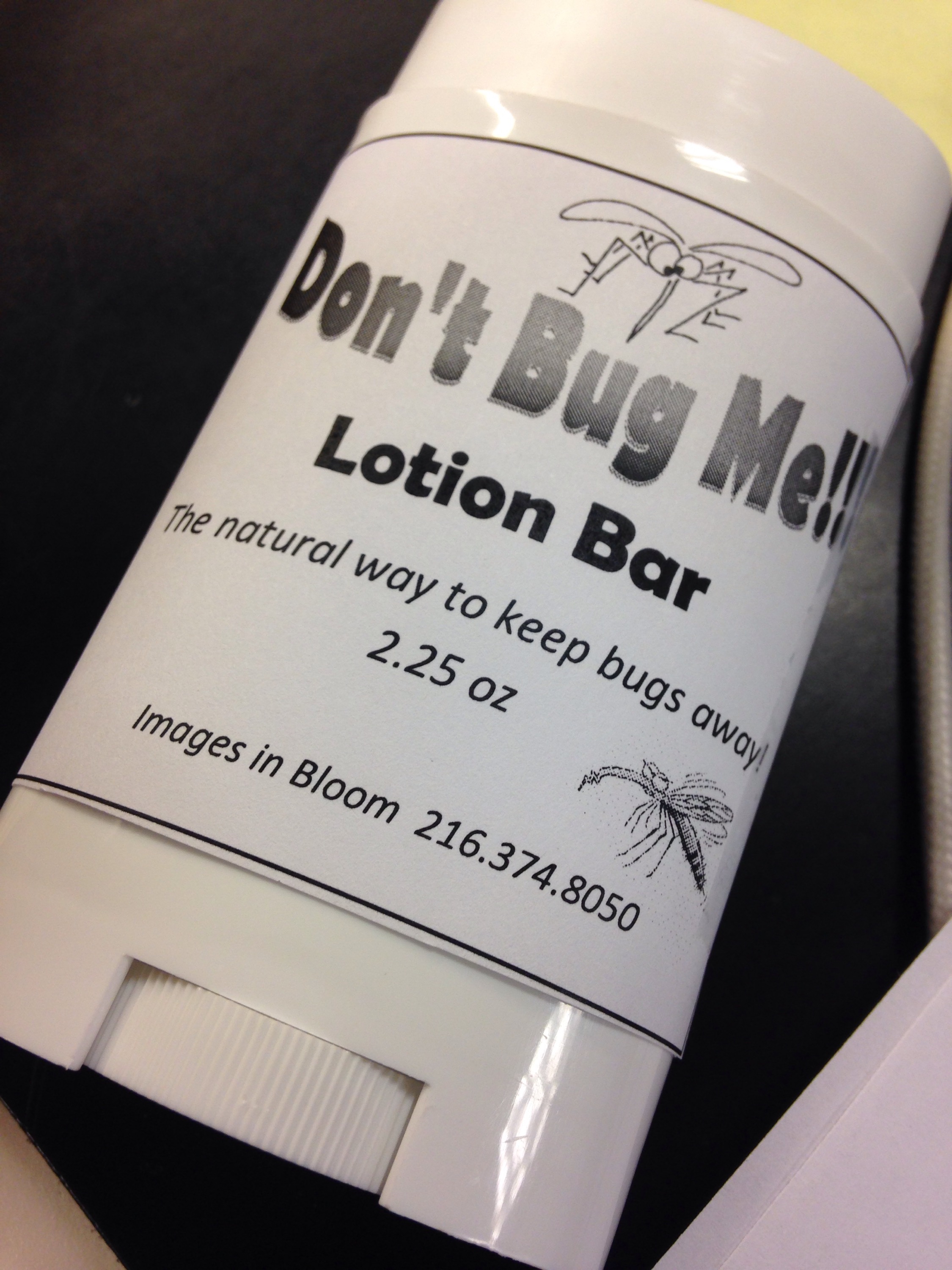Natural Bug Repellant
A month ago we launched a line called “Don;t Bug Me!!” featuring a cold processed soap and a lotion bar both scented with a blend of essential oils that are clean smelling and yet work well to keep from being mosquito bitten. Ideal products for the active outdoor lovers… campers, hikers, picnic goers, ball game attenders and players…. and so on. We do a lot of research, and when Steve developed the lotion bar we did not have some of the most interesting research information we now have.
There is a growing concern for the chemicals we have sprayed on our skin, and our pets to protect from insects… and with the concern has come growing research to natural alternatives. Here are some of the findings:
-
Lavender
A sweet-smelling, all-purpose insect repellent, lavender essential oil performed well in recent studies as both a tick deterrent and a method of preventing tick eggs from hatching. Additionally, Ohio State University recommends it for controlling fleas. Producers steam-distill the flowering tips of the herb Lavendula officinalis to obtain the oil. Use lavender in soaps, lotions, spray repellents, potpourris and under cushions and rugs. A 2007 South African study found that formulas containing diluted lavender at rates of 10 to 20 percent lavender performed well as tick repellents when compared artificial DEET (N,N-diethyl-m-toluamide) sprays.
-
Pennyroyal
Pennyroyal, a member of the mint family, is a traditional flea repellent. According to herbalist Jeanne Rose, both the American pennyroyal species Hedeoma pulegioides and the European Mentha pulegium make effective essential oils. Sprinkle pennyroyal oil under cushions, rugs and pet beds in the home, but don’t add it to skin lotions or pet fur. “Herb Companion” magazine notes that use of the herb itself as flea repellent goes back as least as far as the first century. Consider including both dried pennyroyal leaves and pennyroyal essential oil in anti-insect potpourri formulas, perhaps paired with the sweet-smelling daisy-like herb fleabane.
-
Lemongrass
Rose recommends lemongrass essential oil as a natural flea and tick repellent. The oil comes from the tropical lemongrass plant Cymbopogon citrates. A related species, citronella grass, may also repel fleas, according to Ohio State University. Lemongrass oil contains a pleasing citrus scent and is also useful in controlling oily scalps and skin conditions, making it suitable for lotion, spray, soap and shampoo formulas.
-
Eucalyptus
Ohio State University suggests using eucalyptus oil as a flea repellent. The oil comes from various trees of the Australian Eucalptus species. Rose suggests pairing it with citronella oil as an all-purpose bug deterrent. Test in alone, or with citronella, in lotion or spray for your skin, but use caution around pets.
-
Lemon
“Herb Companion” magazine’s formula for natural bug control contains lemon oil, extracted from the skins of lemons. Lemon essential oil contains the compound limolene, considered especially effective against the fleas which pester cats. Sprinkle the oil around the home, including in potpourri bowls, under cushions and under pet beds, but don’t add directly to pet fur. The oil is safe to use in diluted form for human sprays, lotions and soaps, but it may make the skin more vulnerable to UV rays.
Our blend of essential oils include Cedarwood, Peppermint, Lemongrass, Geranium, Citronella and a hint of Tea Tree Essential Oils. We are delighted with the scent, and so far the moisturizing effect of the lotion bar has been wonderful on the skin. But we feel really great knowing that we produce a product that will help deter bug bites, while being chemical free, and gentle on the skin.
We are working on a small spray also, which uses this research, these essential oils, and allows for a quick spray for humans or pets. Still in the final steps of development… coming soon. Research rocks!!!!

You must be logged in to post a comment.